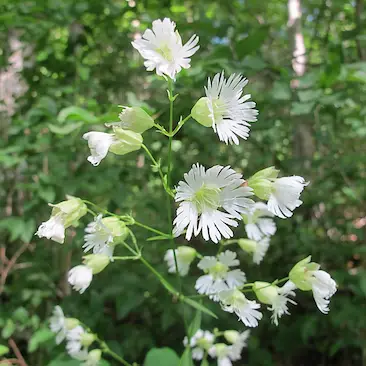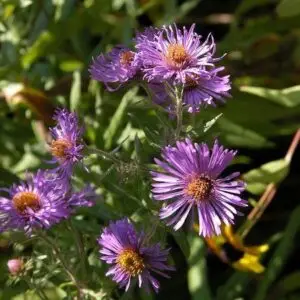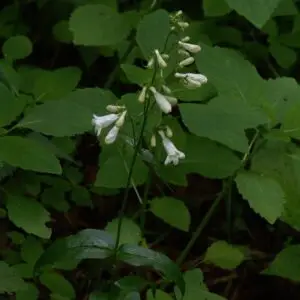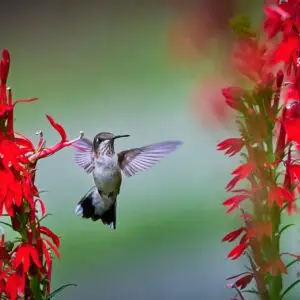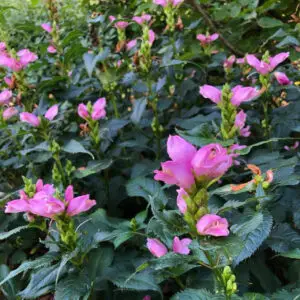| Size | Trade Gallons |
|---|
Silene stellata – Royal Catchfly (DRGHT.H.MTH.NB.OP.SHWY)
Ecosystem Services:
(B)-Birds (B&B)-Birds & Butterflies
(BTF)-Butterflies (BW)-Black Walnut Resistant
(DR)-Deer Resistant (DRGHT)-Drought Resistant
(EC)-Erosion Control (EVR)-Evergreen
(FC)-Fall Color (FRG)-Fragrant
(GRD)-Groundcover (H)-Host plant
(HMR)-Hummingbirds (M)-Mammals
(MTH)-Moths (N)-Nectar
(NB)-Native Bees (NST)-Nesting Material
(OP)-Other pollinators (RR)-Rabbit Resistant
(SHWY)-Showy (SPC)-Specimen Plant
Starry Campion is a native wildflower that is erect, loosely branching, and clumping perennial. It grows about 2 to 3 feet tall and has five-petaled fringed white blooms atop the stems. Its lance-shaped leaves appear in whorls. It is a member of the Caryophyllaceae family that includes carnations and pinks.
Starry Campion is native to the central and eastern parts of the United States. The plant may be found in thickets, woodlands, meadows, prairies, or wooded slopes.
The genus name, Silene, means “catchfly” or “campion.” The plants in this genus have sticky hairs that discourage ants and other insects from eating the plant. The species name, stellata, is derived from “starry or star-like.”
The Starry Campion grows best in partial shade. The leaves become yellowish-green when exposed to full sun. It prefers dry to moist well-drained sandy or clay soils. Good drainage is essential. The mature plant is shade, dry soils, and drought tolerant. Tall plants may require staking for support. It is propagated by seeds, stem cuttings, or division. Seeds may be planted immediately after collection or may be stored. It is best to divide the mature plant’s late fall or early spring. They should be placed about 2 feet apart.
The plant has a deep white taproot. This species is easily identified by its brilliant white frilly petals as well as its lanceolate-shaped leaves that appear in whorls of four. The flowers bloom during the summer for three to 4 weeks. The flowers tend to close slightly in the bright sun. The flowers are replaced by ovoid seed capsules. The plant can reproduce by reseeding itself.
The flowers of the Starry Campion are quite beautiful, and their nectar attracts butterflies and moths. This plant would be best grown in naturalized areas, wildflower gardens, woodland gardens, pollinator gardens, or cottage gardens.

